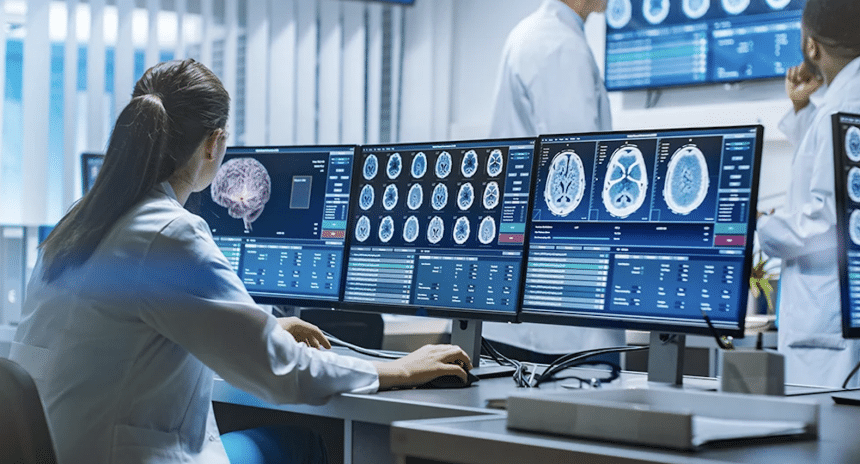Starting a medical facility can feel a little like trying to build a spaceship while it’s already in flight. You’re juggling compliance, staffing, technology, and patient experience—all while keeping one eye on the bottom line. But whether you’re planning a cutting-edge surgical center or a family-focused clinic, one thing is certain: your tech choices, both high and low, will make or break your setup.
Some innovations might grab headlines, but it’s often the simple, functional tools that keep everything running day-to-day. The trick is knowing when to invest in futuristic tools and when to rely on dependable basics. Let’s check out some smart options to consider to help you get started.

Operating Room-Ready Tech
If you’re building a facility with an emphasis on advanced procedures or surgical specialties, you might be wondering how immersive tech fits into the equation. Fitting your doctors with the Apple vision pro, is proving to have some great outcomes. This mixed-reality device is being used in operating rooms to assist with real-time overlays of anatomical structures, procedural guidance, and even remote collaboration with off-site specialists.
In a surgical setting, this isn’t just cool technology—it’s actionable precision. Surgeons can access patient imaging, vitals, or procedural steps without removing their focus from the operating field. That’s a serious advantage when the margin for error is razor thin.
Of course, adopting tools like this requires proper infrastructure, including staff training, secure integrations with existing medical systems, and reliable connectivity. But for facilities aiming to distinguish themselves with surgical innovation, this is the kind of investment that can boost performance, reduce fatigue, and support more personalized patient outcomes.
Add Stretcher Parts to Your Startup Playbook
Let’s pivot from high-end headsets to something a little more grounded—literally. When stretchers or beds break down or patient transport equipment needs attention, the last thing you want is to lose time hunting for spare parts. That’s why keeping tabs on parts that break regularly and having quick access to something like a Stryker stretcher parts list should be part of your essential planning for when things break down.
Having these parts on hand—or at least knowing exactly where and how to get them—isn’t just convenient. It’s critical for maintaining safety, compliance, and patient flow. One malfunctioning stretcher can create a bottleneck, disrupt your staff, and delay procedures. For smaller or newly launched facilities, that’s a ripple effect you can’t afford.
Stocking and organizing parts for high-use equipment, from wheels to brake assemblies, allows your team to manage simple repairs in-house without waiting on third-party service calls. It’s a low-tech decision with high-impact benefits: more uptime, smoother operations, and fewer frustrating interruptions. While new tech may grab headlines, seasoned facility managers know that it’s the basics that keep things running day to day.
Automated Check-In Systems to Improve Patient Satisfaction
Opening a medical facility today means managing more than just care delivery—you’re managing expectations. Patients expect experiences that are efficient, low-stress, and tech-enabled. One small way to meet those expectations is through an automated check-in system.
Kiosks and digital check-in platforms not only reduce paperwork but also speed up the front desk experience. For patients, this means shorter wait times and less repetition when providing personal or insurance information. For staff, it reduces manual entry errors and frees up your team members to handle more complex needs.
But here’s the trick: automated doesn’t have to mean impersonal. The best systems still allow for human support when needed. When implemented properly, tech like this enhances the patient journey without replacing the human element.
The Role of Telemedicine Infrastructure
It might seem obvious now, but telemedicine used to be a nice bonus. Today, it’s a must-have. Whether your facility offers mental health, specialty consultations, or routine follow-ups, telemedicine infrastructure should be considered as foundational as plumbing or Wi-Fi.
This means more than just having a webcam. It means ensuring HIPAA-compliant platforms, secure document sharing, and bandwidth that doesn’t buckle under pressure. It means staff training for virtual care etiquette and building workflows that include remote diagnostics, virtual referrals, and after-visit summaries.
The real business value lies in access and reach. Facilities that launch with telemedicine already integrated are able to serve wider geographies, accommodate high-risk patients more safely, and add virtual coverage hours that don’t require extra physical space.
It’s also a great equalizer in care. For patients who face barriers like transportation, mobility, or work constraints, telemedicine isn’t just convenient—it’s necessary. Making it part of your facility’s DNA from the beginning puts you on solid footing for the future of care delivery.












